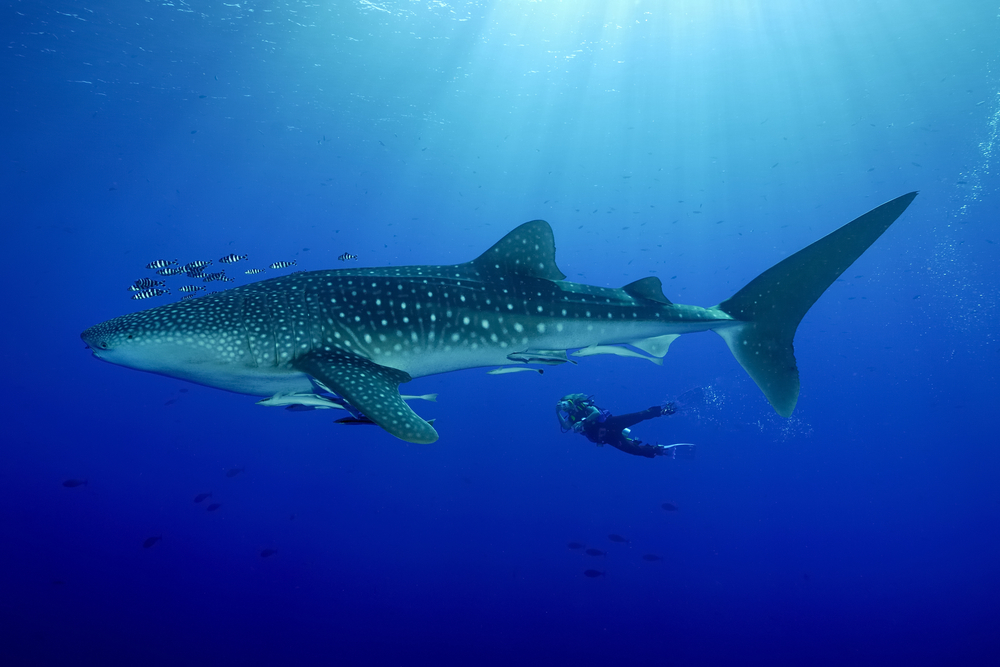
Human behaviour is pushing several species right to the very brink of extinction, the International Union for the Conservation of Nature (IUCN) has recently warned. The organisation, which monitors the world’s most vulnerable populations, has just listed whale sharks and winghead sharks as ‘Endangered’, while Bornean orangutans have been added to the ‘Critically Endangered’ section of the list, which means they are one short step from going extinct.
With enormous swathes of forest in Borneo being felled to make way for lucrative oil palm, rubber and paper plantations, the country’s orangutan population has dropped from 288,500 in 1973 to 100,000 today, and the IUCN expect it to shrink further to around 47,000 by 2025. Besides losing their habitat at an alarming rate, the great apes—which share 97% of their DNA with humans, and are one of our closest relatives—are also falling prey to hunters, with between 2,000 and 3,000 being killed each year.

‘This is the first time in many decades that we have a clear understanding of Bornean orangutan population trends,’ says Erik Meijaard, one of the assessors of the species, a member of the IUCN SSC Primate Specialist Group and director of Borneo Futures. ‘As orangutans are hunted and pushed out of their habitats, losses to this slow-breeding species are enormous and will be extremely difficult to reverse.’
Meanwhile, the IUCN has also identified that the world’s biggest fish, the whale shark, has had its global population halved over the last 75 years. Demand for shark meat, including fins for soups in parts of Asia, has driven the decline in the numbers of this slow moving shark, which also falls prey to ship propellers and trawlers fishing for tuna.

Thanks to coordinated pressure from conservation groups, large-scale fishing of whale sharks in India, the Philippines and Taiwan has now ended, but they continue to be hunted in the waters around other countries, including southern China and Oman.
‘While international Whale Shark trade is regulated through the species’ listing on the Convention on International Trade in Endangered Species (CITES), more needs to be done domestically to protect whale sharks at a national level,’ says lead Red List assessor Simon Pierce, a member of the IUCN Species Survival Commission (SSC) Shark Specialist Group, and co-founder of the Marine Megafauna Foundation.
Joining its big cousin in the uncomfortable ranks of the Red List is the wing head shark, a species of hammerhead whose distinctive body shape makes it very vulnerable to entanglement in fishing nets. Precise numbers in the wild are harder to ascertain than the figures for whale sharks, but in recent surveys of Indonesian fish markets where 20,000 sharks of various species were identified, just one winghead shark was found. A similar pattern is expected throughout Asia in areas where coastal fishing is both intense and mostly unregulated.
‘It is alarming to see such emblematic species slide towards extinction,’ Jane Smart, Director of IUCN’s Global Species Programme, said last week. ‘These new IUCN Red List assessments emphasise how urgent it is for the conservation community to act strategically to protect our planet’s incredible diversity of life. The world’s oceans and forests will only continue to provide us with food and other benefits if we preserve their capacity to do so.’
A year ago, a report authored by top scientists at Stanford, Princeton and Berkeley universities warned that the planet was entering the sixth great mass extinction event, with vertebrates vanishing at a rate 114 times faster than normal and our own kind far from safe from the consequences of widespread climate change, pollution and deforestation.
‘There are examples of species all over the world that are essentially the walking dead,’ Stanford University professor Paul Ehrlich gloomily concluded at the time. ‘We are sawing off the [tree] limb that we are sitting on.’
